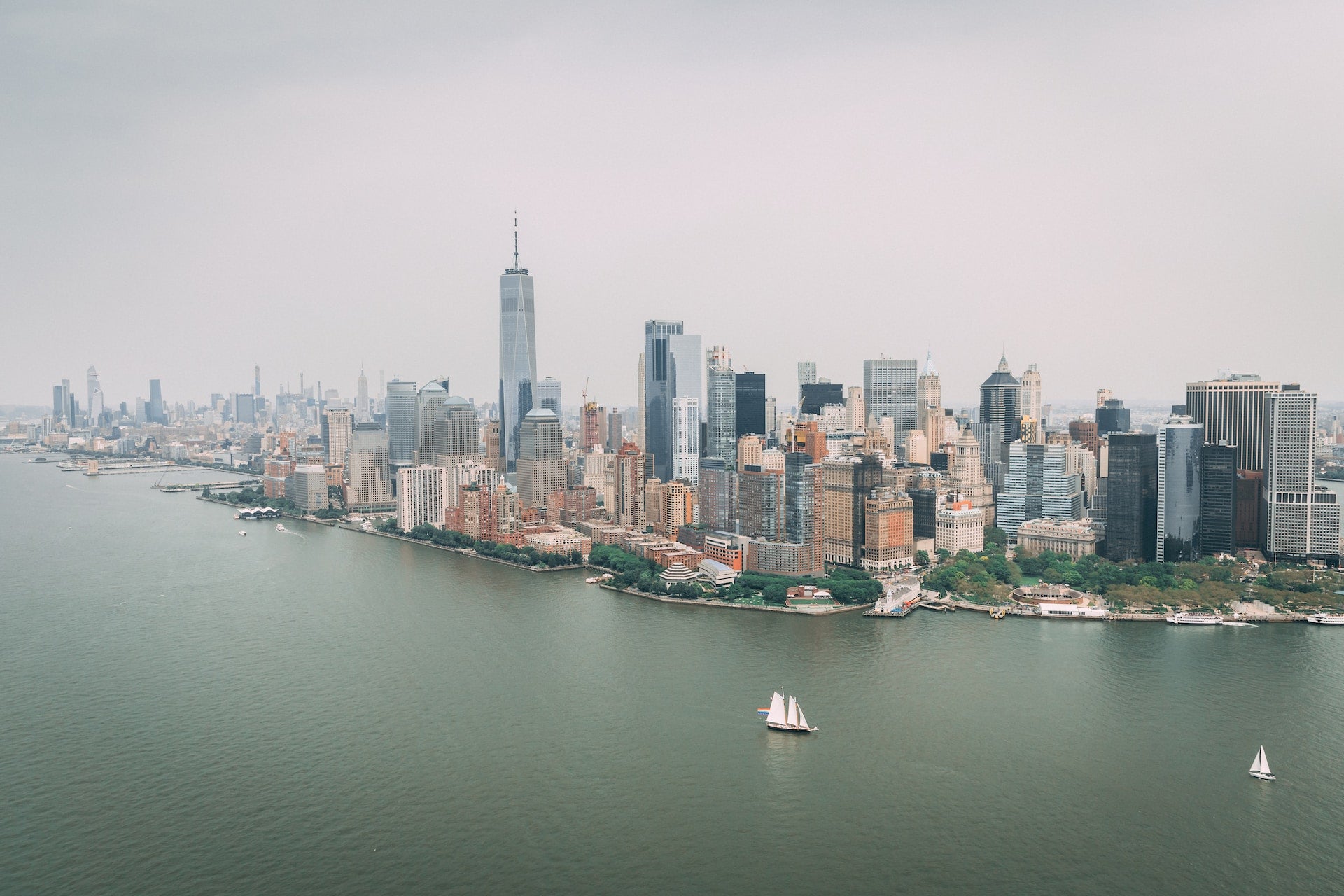KINGSTON, R.I., — June 1, 2023 — New York City is sinking, and some of the more than 1 million buildings that make up its ever-evolving skyline may be playing a part. For the coastal metropolis and others like it around the world, it’s yet another factor to account for as preparations are made for rising sea levels and strengthening storms.
In a new paper, scientists from the University of Rhode Island Graduate School of Oceanography found that New York City is sinking at a rate of 1 to 4 millimeters per year. Even though this descent is consistent with natural subsidence in the region, the researchers found some areas of significantly greater subsidence rates, which may be related to the massive weight of the buildings. The study, led by Tom Parsons of the U.S. Geological Survey with GSO professors Meng (Matt) Wei and Steven D’Hondt, and GSO Ph.D. student Pei-Chin Wu, is part of a growing body of research on how waterfront cities are facing not just rising waters, but sinking land.
It’s hardly news that global sea levels are rising due to climate change, a threat facing coastal communities around the world, but this new research highlights how human infrastructure, including buildings, can increase vulnerabilities in unexpected ways.
“Coastal flooding results from sea level rise and sinking of the shore,” said D’Hondt. “So subsidence will lead directly to coastal flooding even in the absence of sea level rise. Where both processes are occurring, coastal inundation will happen much faster than predicted by sea level rise models.”
Subsidence has been occurring where New York City now sits since the end of the last ice age. As the ice sheets retreated, the land once covered by the ice, north of the city, began to rise and the land that was just south of the ice, where New York City is today, began to sink. That response to melting of the ice sheets continues today.
The research team wanted to better understand the impact of the city’s immense building infrastructure on this gradual descent. To answer this question, the team first estimated the collective weight of more than a million buildings in New York City, amounting to 1.68 trillion pounds, and then calculated the downward pressure caused by the weight of those buildings. How the land reacts to this pressure is not uniform, as the underlying geology of New York City varies from solid bedrock to sand and clay deposits, which can compress more easily. The team also used radar images of the Earth’s surface collected from orbiting satellites to map elevation changes in the region.
The results indicate that in recent years, all of New York City is sinking about 1 to 2 millimeters per year due to post-glacial relaxation. However, some parts of the city, particularly where buildings are built on fill and sediment, are sinking faster, up to 4 millimeters per year. While the massive weight of the buildings causes some of the subsidence, not all of the increased subsidence rate can be directly attributed to the buildings. According to the study, subsidence due to buildings usually stops within a year or two of construction. Continuation of subsidence past that time is largely due to other processes, such as withdrawal of groundwater. In a city where sea level is projected to rise between 8 and 30 inches by 2050, the additional subsidence only increases its vulnerability to coastal storms.
“Anywhere that will eventually be flooded by the combination of sea level rise and coastal subsidence will probably be temporarily flooded by storm surge long before it’s permanently flooded,” said D’Hondt. “By lowering the land relative to sea level, subsidence increases the probability of flooding by a storm surge.”
New York City is not alone, however, as Wei, D’Hondt and Wu previously documented in research on subsidence in other coastal cities.
“In most of them, part of the coastal area is sinking as fast or faster than sea level is rising,” said D’Hondt. “New York is comparable in this respect. However, many cities, mostly in east or southeast Asia, have areas sinking much faster than the fastest sinking areas in New York.”
As in New York City, the weight of urban development in those cities contributes to subsidence for a short period of time after each building is constructed. The subsidence that occurs in those cities on longer timescales is mostly due to other human activities like the extraction of groundwater or oil and gas.
Coastal cities are growing rapidly, and the combination of construction densification and sea level rise is making them increasingly vulnerable to flooding. According to the paper, New York is emblematic of growing coastal cities all over the world that are observed to be subsiding, meaning there is a shared global challenge of mitigation against a growing inundation hazard.
Both Wei and D’Hondt hope that the research will prompt coastal communities to account for subsidence in the plans they are making today to prepare for rising sea levels and storm surge.
“City planners, emergency managers and other decision-makers should look at the data in more detail, identify locations that show higher subsidence rates and incorporate subsidence into their planning,” said Wei.
“The silver lining of this unfortunate situation is that thoughtful planning for recovery from flooding by major storms can be used to pre-adapt coastal regions for the long-term consequences of sea level rise and coastal subsidence,” said D’Hondt.

